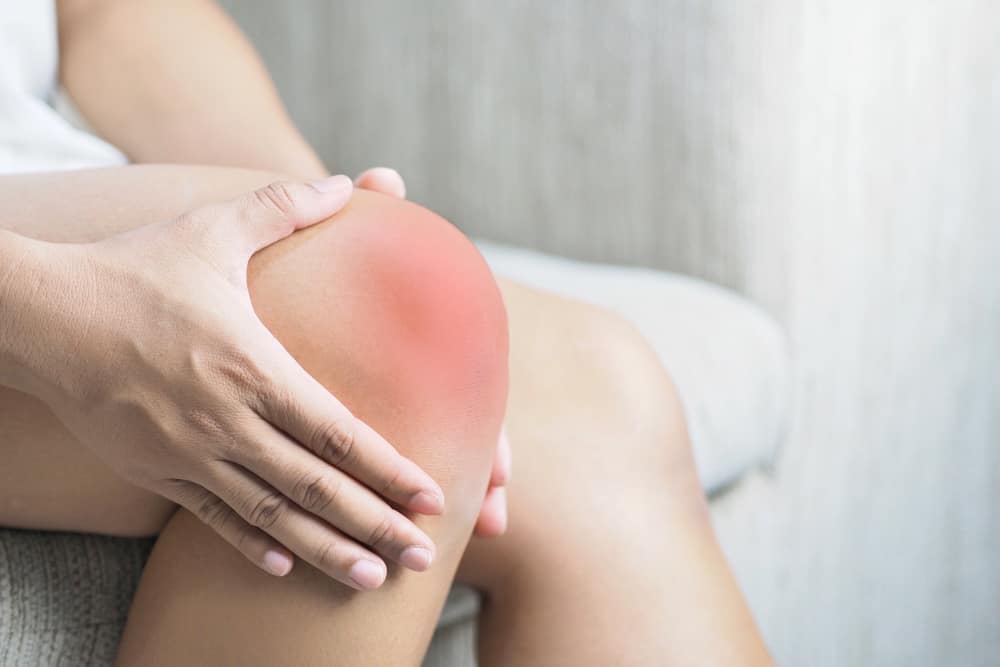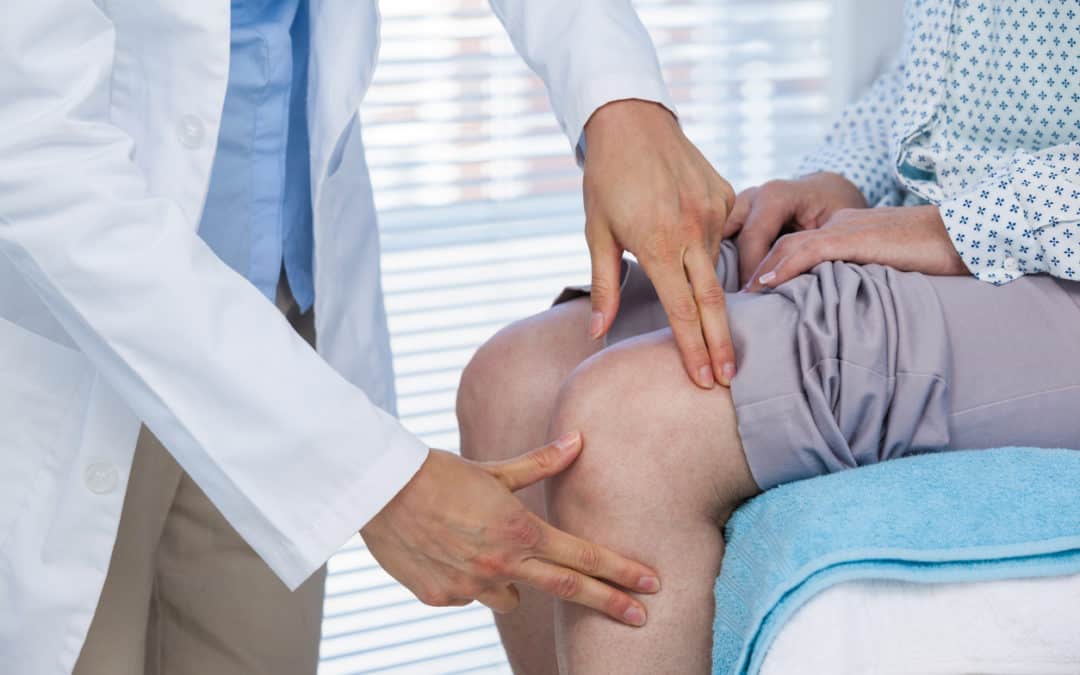
Nov 5, 2021
Prolotherapy, also known as proliferative therapy, is a treatment used to boost the body’s own natural healing capabilities to reduce inflammation, stimulate proliferation of injured tissue and relieve pain.
This is a minimally invasive therapy that involves injection of natural solutions to the injured tissue to stimulate healing. The main ingredient in the injection is dextrose, a sugar solution, which acts as an irritant to the body. The body reacts to the dextrose by stimulating repair and activating its natural healing abilities. The patient experiences relief as the injured tissue strengthens and heals.
What Conditions Can Prolotherapy Treat?
Prolotherapy can be used to treat any number of orthopedic conditions including:
- Osteoarthritis
- Ligament sprains
- Ligament laxity
- Tennis elbow
- Tendinopathy
- Sacroiliac joint ( SI joint) dysfunction
- Achilles tendinopathy
What Does Prolotherapy Entail?
Your physician will first complete an appropriate clinical evaluation and diagnostic testing to determine if you are a good candidate for prolotherapy. The procedure is a minimally invasive procedure performed in a medical clinic using local anesthesia. You may be asked to discontinue anti-inflammatory medications 3-5 days prior to the procedure. The procedure is performed using ultrasound or fluoroscopic guidance for precise localization of target and delivery of the solution. A small needle is used to inject the prolotherapy solution to the injured area using imaging guidance. Depending on the extent of the injury, a series of injections performed a few weeks apart may be needed for a successful treatment. You will be asked to take it easy for a few days and return to normal activity and exercises after 3-5 days. The procedure is very well tolerated with no downtime.
How Effective is This Type of Therapy?
Prolotherapy is a proven treatment that has been in use for more than 80 years and is practiced by physicians around the world. A review in the US National Library of Medicine of the National Institutes of Health evaluated 32 studies on dextrose prolotherapy for chronic musculoskeletal pain. It concluded that “dextrose prolotherapy has been demonstrated to be efficacious and should be considered as a treatment for pain and dysfunction associated with chronic musculoskeletal conditions, particularly tendinopathies and osteoarthritis.”[i]
A good review of prolotherapy treatments can be found here and here.
To learn more about SDOMG and how they have successfully utilized prolotherapy for more than three decades, fill out the form below:
Drs. Mary A. Ambach and Chris Rogers of San Diego Orthobiologics Medical Group have successfully treated hundreds of patients with prolotherapy and other cell-based treatments for more than three decades. Their state -of- the- art facility in Carlsbad offers the most advanced Regenerative Medicine treatments in San Diego with the highest level of safety and efficacy.
[i] https://www.ncbi.nlm.nih.gov/pmc/articles/PMC4938120/

Feb 11, 2021
It may seem counterintuitive, but sometimes regenerative medicine specialists may purposely irritate the tissues in the joint to achieve the ultimate goal of relieving joint pain.
Using irritation to obtain pain relief sounds counterproductive. But in regenerative medicine, when an irritant solution like dextrose (sugar water) is injected into the joint, it actually triggers new tissue growth ultimately leading to long-term reductions in inflammation and pain.
The procedure is known as prolotherapy. It is a non-surgical treatment that can naturally strengthen the joint and lessen pain.
Is Prolotherapy New?
Prolotherapy is one of the first regenerative treatments to gain popularity. Modern-day prolotherapy was developed in 1937 by Dr. Earl Gedney, an osteopathic physician, and surgeon who used it to treat his own thumb injury. It is now practiced by physicians around the world to treat a number of conditions, including ligament laxity and osteoarthritis. It can provide pain relief to patients suffering from pain in the knees, shoulders, hips, ligament and tendon injuries, and SI joint.
This non-surgical treatment delivers a targeted sugar solution to the injured area which acts as an irritant and spurs the body’s own natural healing processes to strengthen and repair damaged tissues. As the supporting tissues get stronger, the joint becomes more stable, inflammation is reduced and the pain abates.
What to Expect from Prolotherapy Treatments
Prolotherapy is performed on an out-patient basis. After a thorough medical history, physical examination, and imaging tests as appropriate, the regenerative medicine specialist will determine if your condition will benefit from prolotherapy. The injection is performed using fluoroscopy (digital x-ray) or ultrasound guidance for precise delivery of the solution to the target region.
The extent of the injury will dictate the course of treatment. Multiple targeted injections may be required in each session and a series of sessions every 1-2 weeks may be necessary.
For patients suffering from joint pain, prolotherapy is a safe, natural, and non-invasive way to provide pain relief and treat the underlying injury.
Drs. Christopher Rogers and Mary A. Ambach have successfully treated thousands of patients with prolotherapy and platelet-rich plasma therapy. San Diego Orthobiologics Medical Group’s state-of-the-art facilities offer patients on-site processing and preparation of their customized treatments.

Nov 13, 2020
We all know that sugar is an important ingredient in baking and cooking, but did you know that it also has important medicinal purposes? The simple sugar, dextrose, can be dissolved in solution and given intravenously to treat dehydration or administer medications.
In orthopedics, physicians use dextrose, which is a natural form of glucose, to promote the normal growth of cells and tissues. Proliferative therapy, commonly referred to as Prolotherapy, involves the injection of dextrose and water to the site of an injured tendon, ligament or joint to stimulate healing. It facilitates the restoration of strength and stability in these tissues.
The solution is prepared at varying concentrations of dextrose, combined with a local anesthesia to minimize discomfort. The concentrated dextrose serves as an irritant and triggers mild inflammation to jump start the natural healing process. Prolotherapy, when used in lower concentrations, has been shown to help nerve pain by blocking nerve pain impulses. It can be combined with natural homeopathic solutions to provide immediate relief to joint, nerve and other soft tissues.
Prolotherapy has been used to treat chronic musculoskeletal conditions for more than 80 years. It was developed by Dr. George Hackett in the 1950’s and represented a major step forward in identifying ways in which the body could heal itself naturally.
Conditions Treated with Prolotherapy
Prolotherapy can reduce pain and inflammation and improve healing in patients suffering from a number of orthopedic conditions, including:
- Tendinopathy
- Joint sprains or laxity
- Sacroiliac joint dysfunction
- Ligament sprains
- Osteoarthritis
- Plantar fasciosis
- Sports injuries such as tennis elbow or golf elbow
Prolotherapy is an Out-Patient Procedure
As opposed to oral medications that must work their way through the body’s systems to reach their intended target, prolotherapy is a targeted treatment that involves the injection of the medication directly to the injured body part. This is done using imaging guidance in the form of fluoroscopy (x-ray) or ultrasound. There is no incision, no major recovery time and no need for lengthy rehabilitation. The entire procedure takes less than an hour. There may be mild swelling or bruising for the first few days, however most patients are able to resume their normal activities the next day. To optimize healing and strengthening, patients are prescribed physical therapy and encouraged to maintain a healthy diet to ensure a successful outcome.
Drs. Christopher J. Rogers and Mary A. Ambach of San Diego Orthobiologics Medical Group together have successfully treated thousands of patients with regenerative therapies such as prolotherapy for more than three decades. They are published authors and cell therapy researchers. Their facility in Carlsbad contains the most advanced Regenerative Medicine technology in San Diego and offers same- day treatments with the highest level of safety and efficacy.
https://www.healthline.com/health/dextrose

Jun 2, 2020
What is Prolotherapy?
Prolotherapy (short for proliferative therapy) stimulates the body’s natural healing factors to strengthen and repair injured joints, ligaments and tendons. This minimally invasive procedure is used to address a number of musculoskeletal conditions including:
- Back pain due to degenerative disc disease, sacroiliac joint instability, facet joint syndrome and nerve pain
- Neck pain due to arthritis or whiplash injury
- Knee pain caused by osteoarthritis, meniscal tears or sprains
- Arm and shoulder pain as a result of arthritis, rotator cuff tendon tears, golfer’s elbow, tennis
- elbow and chronic tendonitis.
Studies have shown that 85 to 95 percent of patients with back pain experience improvement with prolotherapy. [i] Additional studies have also shown prolotherapy is successful for various ligament, tendon or joint pain/injuries, including knee arthritis. The Annals of Family Medicine reported that a randomized controlled trial of prolotherapy in patients with knee osteoarthritis resulted in clinically meaningful sustained improvement of pain, function, and stiffness.[ii]
How It Works
Prolotherapy stimulates the body’s natural healing mechanisms to produce new tissue. Using fluoroscopic (x-ray) guidance, the physician injects a mixture of local anesthetics and dextrose (a sugar-based solution) directly to the injured area. The dextrose works as an irritant to kick start the body’s natural healing response and encourages the growth of normal ligament and tendon fibers. This results in long-term healing and pain relief. In some cases, the treatment is repeated with the goal of restoring strength and stability without loss of flexibility and function. As the body heals the pain subsides, in most cases, permanently.
Prolotherapy, when used in lower concentrations, has also been shown to help with nerve pain by blocking nerve pain impulses. This can provide immediate pain relief to joint, nerve and soft tissue injuries.
For patients with advanced injury or degeneration, prolotherapy can be combined with Platelet Rich Plasma (PRP) and autologous (from the same person) adult regenerative cells to boost the regenerative process. Every formulation is specifically targeted to the patient’s unique needs.
Is Prolotherapy Safe?
In contrast to many medical treatments that may provide only temporary benefits, prolotherapy is a safe treatment that offers long-term relief.
Prolotherapy is an in-office procedure performed under local anesthetic. There is no hospitalization required, nor the need for extended rehabilitation. Most patients are able to resume their daily activities immediately. Even those who require additional treatments are likely to enjoy significant pain relief after just one treatment.
Like every other medical intervention, the success of prolotherapy can be impacted by the patient’s overall health as well as any underlying nutritional or genetic deficiencies that might make healing more difficult. It is important to talk with your doctor about the best methods to optimize your health and healing potential.
Dr. Christopher J. Rogers and Dr. Mary A. Ambach of San Diego Orthobiologics Medical Group are leaders in the field of regenerative medicine and have been performing prolotherapy with great success for decades. They serve as faculty members and lecturers at national and international medical conferences and serve on the board of directors for several regenerative medicine organizations. They have published scientific papers in the medical literature and are dedicated to excellent patient care and advancing the field of regenerative medicine.
Resources:
[i] https://prolotherapycollege.org/what-is-prolotherapy/
[ii] https://www.ncbi.nlm.nih.gov/pmc/articles/PMC3659139/



